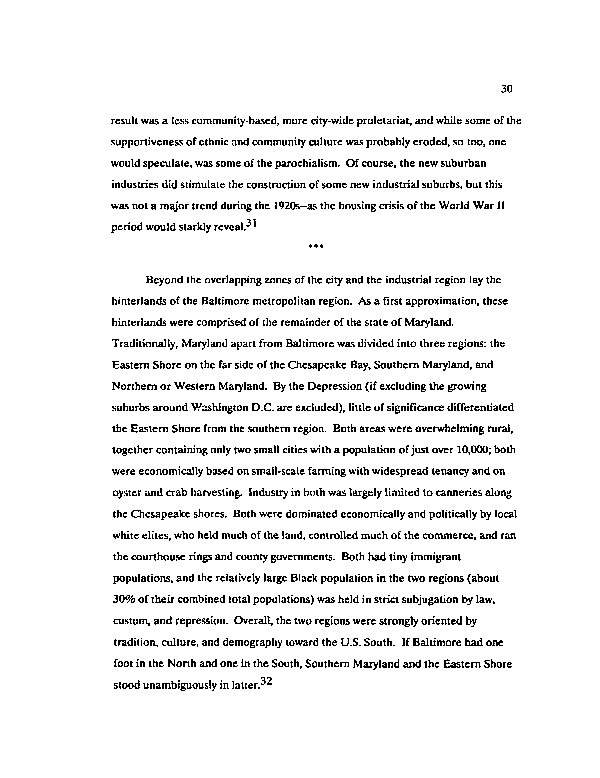|
30
result was a less community-based, more city-wide proletariat, and while some of the
supportiveness of ethnic and community culture was probably eroded, so too, one
would speculate, was some of the parochialism. Of course, the new suburban
industries did stimulate the construction of some new industrial suburbs, but this
was not a major trend during the 1920s-as the housing crisis of the World War II
period would starkly reveal.^ *
*•*
Beyond the overlapping zones of the city and the industrial region lay the
hinterlands of the Baltimore metropolitan region. As a first approximation, these
hinterlands were comprised of the remainder of the state of Maryland.
Traditionally, Maryland apart from Baltimore was divided into three regions: the
Eastern Shore on the far side of the Chesapeake Bay, Southern Maryland, and
Northern or Western Maryland. By the Depression (if excluding the growing
suburbs around Washington D.C. are excluded), little of significance differentiated
the Eastern Shore from the southern region. Both areas were overwhelming rural,
together containing only two small cities with a population of just over 10,000; both
were economically based on small-scale farming with widespread tenancy and on
oyster and crab harvesting. Industry in both was largely limited to canneries along
the Chesapeake shores. Both were dominated economically and politically by local
white elites, who held much of the land, controlled much of the commerce, and ran
the courthouse rings and county governments. Both had tiny immigrant
populations, and the relatively large Black population in the two regions (about
30% of their combined total populations) was held in strict subjugation by law,
custom, and repression. Overall, the two regions were strongly oriented by
tradition, culture, and demography toward the U.S. South. If Baltimore had one
foot in the North and one in the South, Southern Maryland and the Eastern Shore
stood unambiguously in latter.
|

